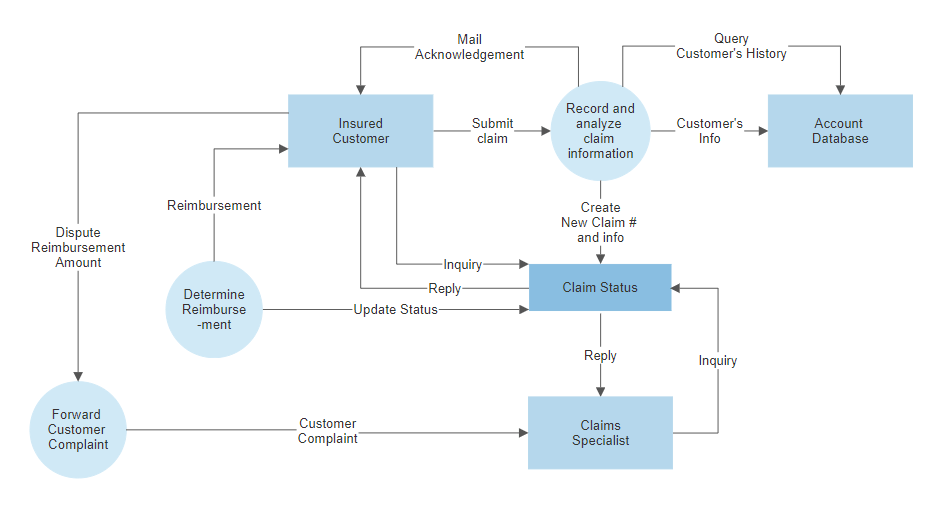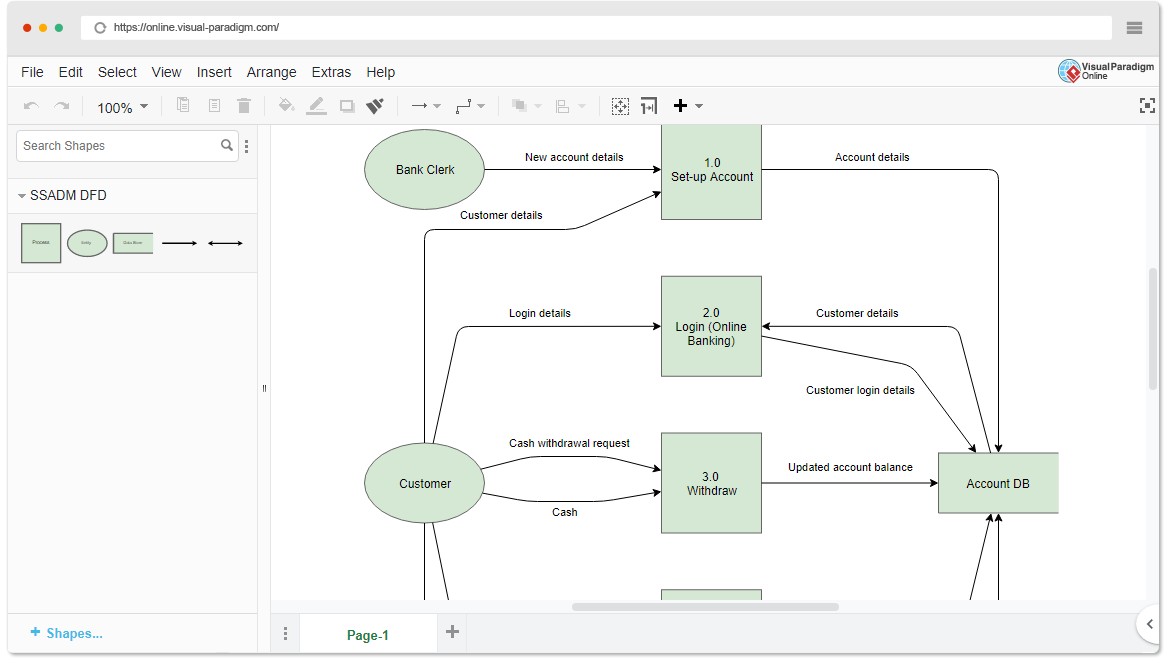

It’s almost as though the logical DFD is how a customer or cashier would describe the process, while the physical DFD is how a computer would describe the process. A physical DFD would instead take note of details like bar codes, transaction files, and payment details like a credit card number. Physical DFDsĪ great example of this would be that a logical DFD of a grocery store checkout process would include things like an item number, prices, and receipts. Meanwhile, physical DFDs focus on how information moves throughout the system or how the information flow is implemented. Logical DFDs take the perspective of the business or its activities, looking at what information is moving through the system. There are two distinct types of data flow diagrams: the logical DFD and the physical DFD. Types of Data Flow Diagrams: Logical vs Physical Data Models These blog posts will help you learn more about UML: Typically, DFDs don’t capture interactive or real-time systems as well as some types of UML diagrams, but they are easier to learn and make. While data flow diagrams show the flow of information through a system, they may not be as specific or detailed as a diagram made with Unified Modeling Language. ) What’s the Difference Between Data Flow Diagrams and UML? (Pro tip: you can use this diagram as a starting point for your own data flow diagram by launching it as a template in Gliffy Online.

It’s important to remember that these flows of information don’t necessarily have to happen in chronological order, even though the processes in the rounded-corner rectangles do. In this example of a Data Flow Diagram, we see several steps in the process of enrolling students at a university and all the inputs and outputs of data required for each step. Business Analysis: these diagrams provide a framework to examine existing systems and remove inefficiencies.Agile Development: allows developers to better visualize requirements as they build on existing work.
#DFD SOFTWARE SOFTWARE#

Physical Data Modelsĭeveloped decades ago as a way to keep up with changing technology, the DFD methodology helped capture the increasingly complex flow of data in a computer system. Types of Data Flow Diagrams: Logical vs.What's the Difference Between Data Flow Diagrams and UML?.
#DFD SOFTWARE TRIAL#
You can get started with a free trial or, to learn more about DFDs, read on or jump ahead to one of the following sections: Gliffy is easy-to-use data flow diagram software that allows you to drag and drop shapes to make a data flow diagram online. Data flow diagrams (DFDs) can show varying depths of information and help non-technical audiences understand how data flows throughout a software system. Data flow diagrams or data flow charts are flowcharts that specifically show the flow of information throughout a system or during a process.


 0 kommentar(er)
0 kommentar(er)
